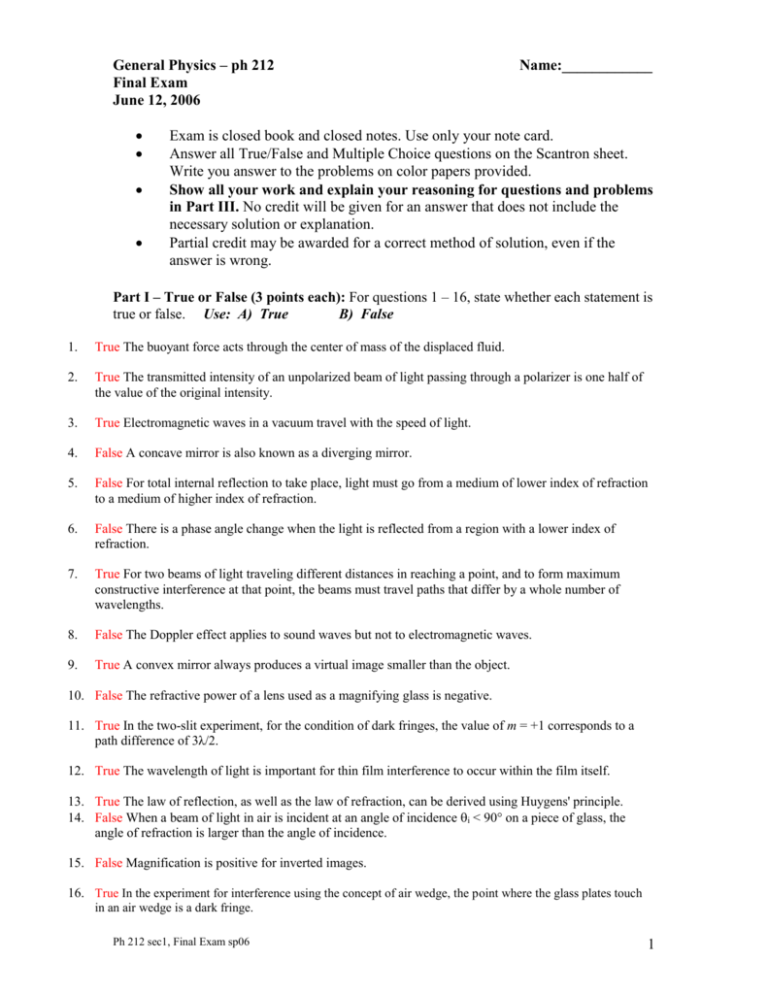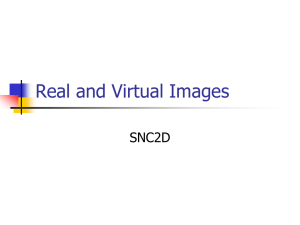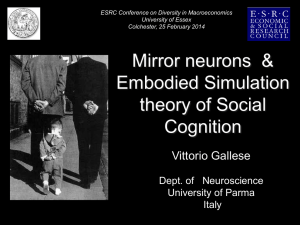An Old ph212 Final Exam w/partial Sol
advertisement

General Physics – ph 212 Final Exam June 12, 2006 Name:____________ Exam is closed book and closed notes. Use only your note card. Answer all True/False and Multiple Choice questions on the Scantron sheet. Write you answer to the problems on color papers provided. Show all your work and explain your reasoning for questions and problems in Part III. No credit will be given for an answer that does not include the necessary solution or explanation. Partial credit may be awarded for a correct method of solution, even if the answer is wrong. Part I – True or False (3 points each): For questions 1 – 16, state whether each statement is true or false. Use: A) True B) False 1. True The buoyant force acts through the center of mass of the displaced fluid. 2. True The transmitted intensity of an unpolarized beam of light passing through a polarizer is one half of the value of the original intensity. 3. True Electromagnetic waves in a vacuum travel with the speed of light. 4. False A concave mirror is also known as a diverging mirror. 5. False For total internal reflection to take place, light must go from a medium of lower index of refraction to a medium of higher index of refraction. 6. False There is a phase angle change when the light is reflected from a region with a lower index of refraction. 7. True For two beams of light traveling different distances in reaching a point, and to form maximum constructive interference at that point, the beams must travel paths that differ by a whole number of wavelengths. 8. False The Doppler effect applies to sound waves but not to electromagnetic waves. 9. True A convex mirror always produces a virtual image smaller than the object. 10. False The refractive power of a lens used as a magnifying glass is negative. 11. True In the two-slit experiment, for the condition of dark fringes, the value of m = +1 corresponds to a path difference of 3λ/2. 12. True The wavelength of light is important for thin film interference to occur within the film itself. 13. True The law of reflection, as well as the law of refraction, can be derived using Huygens' principle. 14. False When a beam of light in air is incident at an angle of incidence i < 90° on a piece of glass, the angle of refraction is larger than the angle of incidence. 15. False Magnification is positive for inverted images. 16. True In the experiment for interference using the concept of air wedge, the point where the glass plates touch in an air wedge is a dark fringe. Ph 212 sec1, Final Exam sp06 1 Part II – Multiple Choice (3 points each): Choose the one correct answer for each of the following questions that best answers or completes the question. 17. A figure skater is spinning slowly with arms outstretched. She brings her arms in close to her body and her moment of inertia decreases by 1/2. Her angular speed increases by a factor of A) 1/2. B) 2 C) 2. D) 4. 18. A mass m is suspended from the ceiling of an elevator by a spring of force constant k. When the elevator is at rest, the period of the mass is T. How does the period of the mass change when the elevator moves upward with constant speed? A) It increases. C) It does not change. B) It decreases. D) It depends on how much you stretch the spring. 19. The wavelengths corresponding to the harmonics of a string with fixed ends can be found by saying that the length of the string must be equal to A) an odd number of half-wavelengths. B) an integer number of wavelengths. C) an odd number of quarter-wavelengths. D) an integer number of half-wavelengths. 20. The vertical displacement of a string is given by D(x,t) = cos[(3.25x - (7.22)t] (in mks units). What is the wavelength of the wave? A) 0.308 m B) 0.870 m C) 0.139 m D) 1.93 m 21. In many cartoon shows, a character runs of a cliff, realizes his predicament and lets out a scream. He continues to scream as he falls. If the physical situation is portrayed correctly, from the vantage point of an observer at the top of the cliff leaning over the edge, the pitch of the scream should be A) lower than the original pitch and decreasing as he falls. B) lower than the original pitch and constant. C) higher than the original pitch and constant. D) higher than the original pitch and increasing as he falls. 22. By what amount does the intensity level decrease when you triple your distance from a source of sound? A) 4.8 dB B) 3.0 dB C) 9.5 dB D) 6.0 dB 23. The pitch of a sound is determined by A) the wavelength. B) the amplitude. C) the speed. D) the frequency. 24. Four waves are described by the following expressions, where distances are measured in meters and times in seconds. I y = 0.12 cos(3x - 21t) II y = 0.15 sin(6x + 42t) III y = 0.13 cos(6x + 21t) IV y = -0.23 sin(3x - 42t) Which of these waves travel in the +x direction? A) II and IV B) II and III C) I and IV D) I and III 25. A spar buoy consists of a circular cylinder, which floats with its axis oriented vertically. One such buoy has a radius of 1.00 m, a height of 2.00 m, and weighs 40.0 kN. What portion of it is submerged when it is floating in fresh water? A) 1.35 m B) 1.20 m C) 1.25 m D) 1.30 m Ph 212 sec1, Final Exam sp06 2 26. One day, while swimming below the surface of the ocean, you let out a number of bubbles of air from your mouth. As the bubbles rise toward the surface, their diameters will A) increase. C) decrease. B) stay the same. D) about half will increase and the other half will decrease. 27. If the magnification of a mirror is negative, which of the following is correct? A) The image is upright and the mirror is convex. B) The image is inverted and the mirror is concave. C) The image is inverted and the mirror is convex. D) None of the other answers is correct. 28. An object is placed in front of a convex mirror at a distance closer than the focal length of the mirror. The image will appear A) upright and reduced. C) reversed right and left. B) behind the mirror. D) all of the above 29. A 4.0-cm-tall object is placed 50.0 cm from a diverging lens of focal length 25.0 cm. What is the nature and location of the image? A) A real image, 1.3 cm tall, 16.7 cm same side as the object B) A virtual image, 4.0 cm tall, 20 cm other side of the object C) A real image, 4.0 cm tall, 20 cm other side of the object D) A virtual image, 1.3 cm tall, 16.7 cm same side as the object 30. What is the power of a lens that has a focal length of -40 cm? A) +2.5 diopters B) +4.0 diopters C) –2.5 diopters D) –4.0 diopters 31. A single-slit diffraction pattern is formed on a distant screen. Assuming the angles involved are small, by what factor will the width of the central bright spot on the screen change if the wavelength is doubled? A) It will become four times as large. B) It will be cut in half. C) It will double. D) It will be cut to one-quarter its original size. 32. Salt water has greater density than fresh water. A boat floats in both fresh water and in salt water. Where is the buoyant force greater on the boat? A) fresh water B) salt water C) Buoyant force is the same in both. D) impossible to determine from the information given 33. A wave pulse traveling to the right along a thin cord reaches a discontinuity where the rope becomes thicker and heavier. What is the orientation of the reflected and transmitted pulses? A) Both are right side up. B) Both are inverted. C) The reflected pulse returns inverted while the transmitted pulse is right side up. D) The reflected pulse returns right side up while the transmitted pulse is inverted. 34. If you stand in front of a concave mirror, exactly at its focal point, A) you will see your image and you will appear larger. B) you will see your image, and you will appear smaller. C) you won't see your image because it's focused at a different distance. D) you will see your image at your same height. E) you won't see your image because there is none. Ph 212 sec1, Final Exam sp06 3 35. Unpolarized light is passed through a polarizer-analyzer combination. The transmission axes of the polarizer and the analyzer are at 30.0° to each other. What percentage of the unpolarized light gets through the combination? A) 37.5% B) 100% C) 50% D) 75% Part III – Problems: Please Show your work clearly and completely for each of the following problems. Partial credit is only given to a work that is shown clearly. 36. The lens and mirror in figure have a focal length of 80 cm and 40 cm, respectively. The object is placed 2f1 to the left of the lens. A) Draw the ray diagram to locate the final image. B) Calculate the location of the final image. C) Determine the overall magnification. f1 D) What is the nature of the final image? f2 2f1 2(f1+f2) 37. A meter stick lies on the bottom of a 100-cm long tank with its zero at the right edge as shown. Royal looks into the tank at an angle of 30o with his line of sight just gazing the upper left edge of the tank. What mark on the meter stick does he see when the tank is A) empty? B) half full of water? 30o C) Completely full of water? 50 cm Meter stick 38. A sound wave of 40.0 cm wavelength enters the tube at the right end shown at right. What must be the minimum the smallest radius r such that a minimum is heard at the detector end? zero 100 cm 39. A 10 m beam of mass 300 kg extends over a ledge as in the figure. The beam is not attached, but simply rests on the surface. A 60 kg student intends to position the beam so that he can walk to the end of it. How far from the edge of the ledge can the beam extend while still keeps the beam and student balanced? ( i.e. any longer extension will cause the student and the beam to fall). Ph 212 sec1, Final Exam sp06 4









